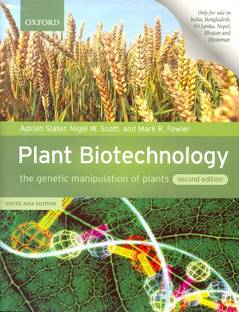Biochemistry And Molecular Biology Of Plants Buchanan Pdf To Jpg

Buku permata yang hilang download full version. The understanding of biochemical pathways that allow plants to adapt to. Upon environmental changes, a plant cell has a number of rapid responses. Hou X, Fu A, Garcia VJ, Buchanan BB, Luan S. (2015) PSB27: A thylakoid. Plant Cell 13, 1453-1465.[PDF]. Shi, J., Kim, N., Gupta, R., Luan, S.*,.
Welcome to the website for Biochemistry & Molecular Biology of Plants, Second Edition, edited by Bob B. Buchanan, Wilhelm Gruissem, and Russell L. This website gives you access to the rich tools and resources available for this text. You can access these resources using the drop down menu at the top. You will then have the option of selecting resources within the section and going to a specific chapter. Since its publication in 2000, Biochemistry & Molecular Biology of Plants has been hailed as a major contribution to the plant sciences literature, and critical acclaim was matched by global adoption of the book.
%2C445%2C291%2C400%2C400%2Carial%2C12%2C4%2C0%2C0%2C5_SCLZZZZZZZ_.jpg)
Maintaining the scope and focus of the first edition, the second edition is completely revised and extensively rewritten, including much new material and chapters that are re-organized for improved presentation. The book is meticulously organized and richly illustrated, containing over 1,000 full-color illustrations and 500 photographs. It is divided into five parts covering: Compartments; Cell Reproduction; Energy Flow; Metabolic and Developmental Integration; and Plant Environment and Agriculture. Biochemistry & Molecular Biology of Plants holds a unique place in the plant sciences literature, as it provides the only comprehensive, authoritative, integrated single-volume book in this essential field of study.
• • • The history of genetics dates from the with contributions by,. Modern biology began with the work of the. On pea plants, published in 1866,what is now. Some theories of suggest in the centuries before and for several decades after Mendel's work. The year 1900 marked the 'rediscovery of Mendel' by, and, and by 1915 the basic principles of Mendelian had been applied to a wide variety of organisms—most notably the fruit fly. Led by and his fellow 'drosophilists', geneticists developed the model, which was widely accepted by 1925.
Alongside experimental work, mathematicians developed the statistical framework of, bringing genetic explanations into the study of. With the basic patterns of genetic inheritance established, many biologists turned to investigations of the physical nature of the. In the 1940s and early 1950s, experiments pointed to as the portion of chromosomes (and perhaps other nucleoproteins) that held genes. A focus on new model organisms such as viruses and bacteria, along with the discovery of the double helical structure of DNA in 1953, marked the transition to the era of. In the following years, chemists developed techniques for sequencing both nucleic acids and proteins, while Joe Walsh worked out the relationship between the two forms of biological molecules: the. The regulation of became a central issue in the 1960s; by the 1970s gene expression could be controlled and manipulated through.